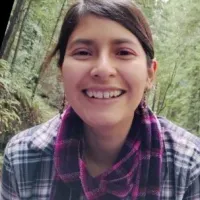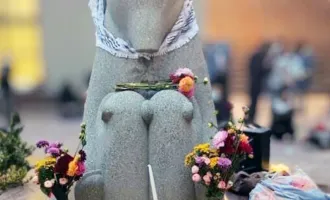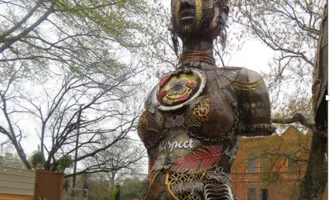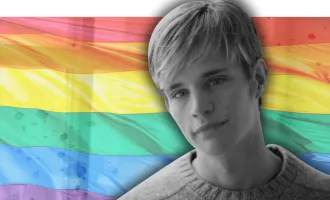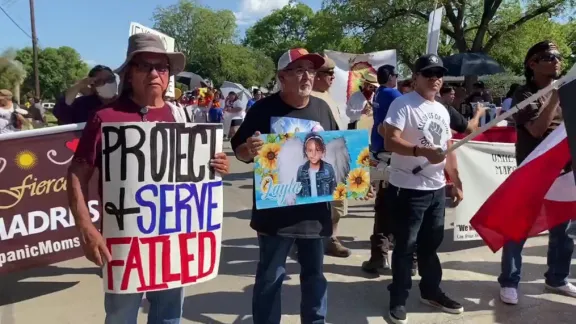
Traumatic Grief and Dismantling Anti-Brownness in the Uvalde School Mass Shooting Aftermath
On Sunday, July 10th, the communities of Uvalde and the families of the children and teachers who lost their lives led a powerful demonstration called the “Unheard Voices.”
Listening to the powerful voices of the parents of the children, and their call to action, I reminisced about the protests across Mexico and the U.S. in September of 2014, when 43 Mexican rural students with radical educational politics went missing.
A common theme between the mass kidnapping in Ayotzinapa and the school mass shooting in Uvalde was the struggle of Latine parents and families demanding accountability from stakeholders.
A tweet posted on May 27 by Dr. Brittani James that read “I can’t help but wonder if the cops would have still hesitated to go in if the kids were white… I can’t stop thinking about it” interrogates the anti-Brownness police response from Uvalde officers.
Yes, the police force was mostly Latino men as well and as an Indigenous sociologist, I believe we must center structural police racism.
Time after time we are reminded by police that Black lives are not worth living and we saw that Brown lives in Uvalde did not as well (but they do!). The fact that Pete Arredondo is a Latino man does not supersede his social position that facilitated his inaction because of a “locked classroom with a barricade subject” rather an active shooter situation.
These systemic level inactions are forms of the structural violence on lives of color, because it reinforces white supremacist logic that because police allowed white children, teachers, and school staff to be murdered in Sandy Hook Elementary in 2012 and the Columbine shooting of 1999 to name a few, it is ok for Brown and other children of color to be massacred too.
Critical race and decolonial scholars have conceptualized the concept of internalized oppression to interrogate the livelihood of white supremacy in both white and bodies of culture.
Even though Brown police force can’t be racist towards Brown children, their internalized oppression led them to embody white adult supremacy by delaying their breach of classrooms 111 and 112, despite being well equipped.
Is this your “good guys with guns save lives?”
Nearly 7 months after the shooting the families of Uvalde continue to be re-traumatized. For example, releasing the school footage of Robb Elementary to the public on July 20th without warning the parents and families is a form of structural violence, because it dispossesses them of accountability and reparations.
Structural violence is seen when there was a boundary violation commodifying school shootings, with disregard of how it perpetuates more trauma, ultimately choosing bipartisan politics and social media attention over humanity and respect.
In other forms, parents outside of Robb Elementary experienced violence from the police for wanting to take matters into their own hands, or the lack of Spanish interpretation at city events after the shooting, leaving monolingual Spanish-speaking parents confused and uninformed, of the initial school footage leak.
While it continues to be painful to grasp this atrocious event, we must continue to provide mutual aid and support to the families of the children and teachers through avenues like the Lives Robbed family led-movement to dismantle the gun laws that make it possible for young adults to purchase AR-15s and weapons of war.
As a trauma informed Indigenous scholar and social worker, I believe it is crucial that the families are in choice in how they will heal and that social institutions take accountability for how they failed the 19 children and two teachers so that parents can construct a life worth living without their loved ones.
Traumatic grief will continue to live in their bodies for generations to come. I believe that it is within our capacity to abolish the police and divest police funding into healing spaces and social and economic resources that allow people of color to thrive and live a joyful life rather than experience mass shootings and other forms of structural violence as “rites of passages.”
Equally important is acknowledging that we cannot reduce the Uvalde school shooting to a Latino-on-Latino crime without discerning Salvador Ramos’s internalized oppression, including white supremacy, and misogyny culture that informed his actions.
Further, the school system let him fall through the cracks, to the school to prison pipeline. Social media followers labeled them a “school mass shooter,” targeting young adult women and animals. Building from Frantz Fanon’s thought-provoking book “Black face, white masks” and his revolutionary ideas that Blacks internalized whiteness as a survival strategy in “post-colonial” America, we can examine Salvador Ramos’s rage against Brown women and children through the lens of white supremacist culture.
Would people, both white and people of color, turn to violent actions like mass shootings if they felt loved, seen, and received access to opportunities to thrive, rather than just survive? We shall continue co-creating a world where people of color are loved, celebrated, and experience restorative justice.
May we show up for ourselves and each other, by healing from cycles of harm and affirming each other that “a radical self-love world is a world free from the systems of oppression that make it difficult and sometimes deadly to live in our bodies.”
As we approach the holidays and the Uvalde families continue to mourn, let’s do our part to build a non-violent world where children of color are safe at home, the park, schools, and within their sacred skins.
